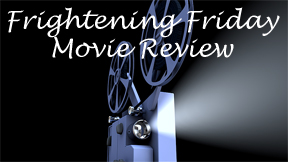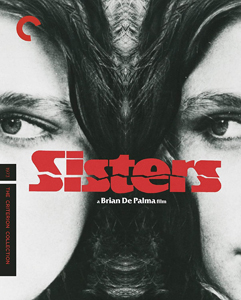Brian De Palma’s first horror film, “Sisters” (1972), is also the movie where he finds one of his two primary identities. Later, he’d be known for mob/corruption flicks, but before that he was known as the director who takes the baton from Alfred Hitchcock (who made the similarly wild “Frenzy” in 1972, then wrapped his career with “Family Plot” in 1976).
Hitchcock’s greatest hits – all in one film
Whether De Palma is a Hitchcock ripoff artist or an ingenious remixer is a popular debate among armchair film scholars, but “Sisters” lands safely in the latter category. The director, co-writing with Louisa Rose, blends elements of “Psycho,” “Rear Window” and “Spellbound,” and he hires Bernard Herrmann to do the score. And most notable of all is De Palma’s “North by Northwest”-ian attitude: He’s having fun, but not in a selfish way. He keeps the audience in on it.
“Sisters” is a sometimes ridiculous story, but it’s often dramatic and thrilling. Creative decisions that seem bizarre are revealed to be done for a reason. Margot Kidder’s Danielle is French-Canadian, thus requiring the actress to do an accent; it adds to the spirit of joyful fakery. And it makes Danielle adorable to us and to Phillip (Lisle Wilson), who meets her on the set of a bizarre gameshow.

“Sisters” (1972)
Director: Brian De Palma
Writers: Brian De Palma (screenplay, story), Louisa Rose (screenplay)
Stars: Margot Kidder, Jennifer Salt, Charles Durning
Appropriately, “Sisters” is a movie of handoffs – both in theme and POV. Danielle is our main character at first, but then – mimicking “Psycho” — it switches to Grace (Jennifer Salt), a bulldog reporter who in “Rear Window” fashion thinks she sees a murder. Because the plot is engagingly wild (just on this side of plausible, and therefore worth telling), we accept the handoff even if Kidder’s performance was winning us over.
What’s especially neat is that De Palma travels down a path not taken in “Rear Window”: We closely follow the manner in which the killer gets the corpse out of the apartment. Here we get another handoff, to private detective Larch (Charles Durning).
But “Sisters” doesn’t get too structurally wild: De Palma brings the Danielle and Grace threads together at an asylum for a gonzo final act that pays off most of the plot threads. But he leaves one dangling — unfortunately, it’s the cool alternate “Rear Window” adventure. The director nods to that in a last shot that’s like a smirking admission that even magicians aren’t perfect. By this time, seeing him pull a rabbit out of a hat would be fun, but seeing him fail to do so is also worth a smile.

Splitting the screen, but not our attention
“Sisters” showcases an early split-screen sequence that’s still one of the most famous in how it builds tension. (One imagines Hitchcock might’ve tried this technique if he were immortal.) Two characters clean up the murder scene on the screen’s left side while on the right side Grace tries to convince cop Kelly (Dolph Sweet) that she really did see a murder up in that apartment. As the sequence continues, key players appear in both shots.
Although the sequence does achieve tension, it’s a tad show-offy. Maybe that (along with the fact that it’s a hard trick to pull off – see also Semisonic’s ambitious “Closing Time” music video) is why split-screen storytelling is not common.
Compare that “Sisters” sequence to a similar stretch in the following year’s “The Day of the Jackal.” A killer commits a murder, changes his appearance and sneaks out of a house; simultaneously, we see people leisurely (not knowing there’s urgency) moving toward discovering the corpse. In “Jackal,” it’s done with simple back-and-forth editing, and the editor was rightly nominated for an Oscar.
Split screens are cooler, but I’m not convinced they are more effective storytelling devices. The debate is academic, though, because the plot would drive “Sisters” even if it was told with mere bland competence. And admittedly, the plot is boosted by its wild bit about conjoined twins. Again, we have an element with one foot in reality (conjoined twins are real, as are psychological disorders), and the other stepping to the edge of plausibility.
Indeed, the “Simpsons” gag about how Bart was the evil twin all along might’ve been partly inspired by “Sisters.” I’m inspired, too – to watch more of De Palma’s Hitchcock riffs.

